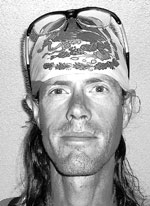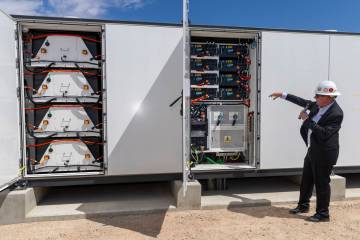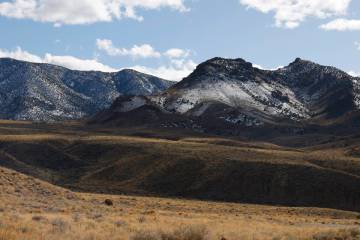Hiker walks power line for clean energy
Adam Bradley says he is ready for the hike of his life.
When he sets out Thursday from southern Idaho for a 501-mile journey to the Harry Allen substation north of Las Vegas, he won't be embarking on the longest trek of he has ever made, nor the highest.
But in many respects it will be the most challenging because of the reason he is doing it: to document the course of a clean energy transmission line to help a conservation group determine where it makes the best fit for wildlife, the landscape and green power.
Befitting the occasion, he will begin on the 40th anniversary of Earth Day with a target to complete the journey after 15 days, on May 6, by averaging more than 33 miles per day over wild, rugged terrain and across agricultural land mostly through rural Nevada.
The trip to follow the planned Southwest Intertie Project, or SWIP, transmission line will also entail some rock climbing.
"It's a once-in-a-lifetime opportunity for me," said Bradley, a 38-year-old Reno resident and proven long-distance "thru-hiker."
He set a record last year for the Pacific Crest Trail, completing the mountainous, 2,655-mile course from Southern California to Canada in 65 days. He lost 10 pounds on that journey, weighing 163 pounds at the end. He carried a pack, not including food and water, that weighed 6 pounds.
"This is an opportunity for me to make connections in the environmental community," he said from Reno, where he works for an outdoor gear and clothing company.
The "SWIP Trip," as he calls it on his blog, is sponsored by the Nevada Wilderness Project, a statewide conservation group that advocates finding solutions for the transmission line's routing rather than citing problems with it.
"We have to begin to look at the energy challenge in a completely different way," said Nevada Wilderness Project Director John Wallin.
"We really need to understand where the line will go and what it's actually going through before we can make solid recommendations to mitigate," he said.
Wallin touts the transmission line as "the backbone of Nevada's clean energy economy."
He approached Bradley, a Nevada Wilderness Project member, about a month ago to explore remote areas where the line will be built later this year. He intends to take photographs and film of affected habitat.
"I think it's safe to say he's going to be the first and only person to walk the corridor in one period," Wallin said.
Wallin acknowledged, however, there will be places where the line for delivering electricity from wind, solar and geothermal sources clashes with the unscathed landscape and habitat for such critters as sage grouse and desert tortoises, as well as deer and antelope that live along the transmission line's proposed path.
"You bet it's going to mess up some habitat, but working with the company (Great Basin Transmission) and with Congress, maybe we can do a better job to protect it," Wallin said.
He said his group would like to see some parts of the line rerouted to avoid breeding areas for sensitive sage grouse populations. Perhaps trade-offs could be made for constructing the line in some areas while locating solar and wind projects that feed electricity to the line in places that have less impact on habitat and the landscape.
Wallin said he is impressed with the consideration Great Basin Transmission took to avoid sage grouse courtship areas, or "leks," and the company's ingenuity in designing transmission towers in such a way that birds of prey won't use them to perch on to hunt grouse and other animals.
Mark Milburn, assistant vice president of LS Power, the parent company of Great Basin Transmission, said his staff worked with public lands officials and wildlife agencies to locate towers to minimize impacts on sage grouse and federally protected desert tortoises.
"We have a unique tower design that limits perching opportunities for predators," he said, describing the V-shape tower design that includes a cross arm with metal plates and spikes to deter hawks and eagles from perching on them.
"In addition to that, we've committed to funding a study on sage grouse impacts to help biologists find out what the real impacts are as the line is being built and after it's been installed," Milburn said.
The study will be used to model future clean-energy projects.
"All of that is a result of collaboration with agencies," he said.
Milburn said construction of the project's first phase from Las Vegas to Ely is expected to begin in September, after an ownership arrangement the company has with NV Energy is reviewed by the Public Utilities Commission.
"We're certainly appreciative of the approach that Nevada Wilderness Project is taking on renewable energy infrastructure and balancing the need for green energy and the environment," Milburn said.
Bradley said he's looking forward to exploring wild areas before they are changed by the project.
"Part of the thing is nobody knows from beginning to end what's out there," he said.
Contact reporter Keith Rogers
at krogers@reviewjournal.com or 702-383-0308.






























